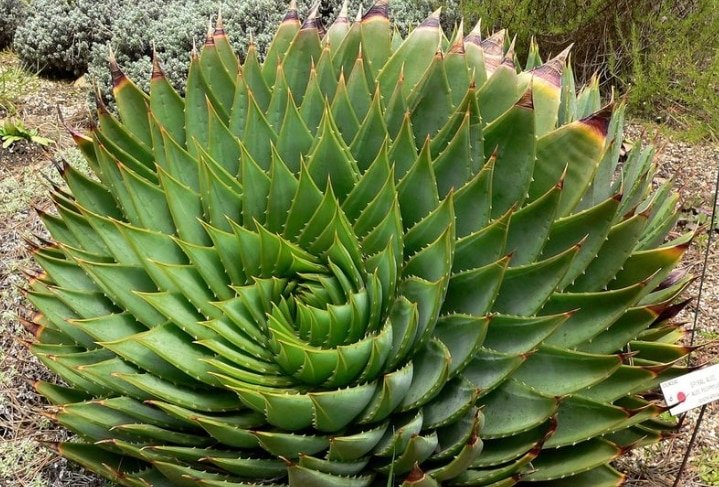
Decoding the Mathematical Secrets of Plants’ Stunning Leaf Patterns
By Maddie Burakoff Smithsonian.com
To the untrained eye, plants may appear to grow rather impulsively, popping out leaves at random to create one big green jumble. Take a closer look, though, and you’ll find that a few curiously regular patterns pop up all over the natural world, from the balanced symmetry of bamboo shoots to the mesmerizing spirals of succulents.
In fact, these patterns are consistent enough that cold, hard math can predict organic growth fairly well. One assumption that has been central to the study of phyllotaxis, or leaf patterns, is that leaves protect their personal space. Based on the idea that already existing leaves have an inhibitory influence on new ones, giving off a signal to prevent others from growing nearby, scientists have created models that can successfully recreate many of nature’s common designs. The ever-fascinating Fibonacci spiral, for example, shows up in everything from sunflower seed arrangements to nautilus shells to pine cones. The current consensus is that the movements of the growth hormone auxin and the proteins that transport it throughout a plant are responsible for such patterns.

Carol graduated from Riverside White Cross School of Nursing in Columbus, Ohio and received her diploma as a registered nurse. She attended Bowling Green State University where she received a Bachelor of Arts Degree in History and Literature. She attended the University of Toledo, College of Nursing, and received a Master’s of Nursing Science Degree as an Educator.
She has traveled extensively, is a photographer, and writes on medical issues. Carol has three children RJ, Katherine, and Stephen – one daughter-in-law; Katie – two granddaughters; Isabella Marianna and Zoe Olivia – and one grandson, Alexander Paul. She also shares her life with her husband Gordon Duff, many cats, and two rescues.
ATTENTION READERS
We See The World From All Sides and Want YOU To Be Fully InformedIn fact, intentional disinformation is a disgraceful scourge in media today. So to assuage any possible errant incorrect information posted herein, we strongly encourage you to seek corroboration from other non-VT sources before forming an educated opinion.
About VT - Policies & Disclosures - Comment Policy




If the cause is growth hormones and proteins, then we would expect the patterns to be isolated in systems with those characteristics. But, the patterns exist in all basic structures of reality including time itself.
In fact, the geometry of the Aloe in the picture, best represents the true shape of the periodic table if portrayed using only primordial elements.
Fibonacci Sequence – Golden Ratio (sacred geometry creation code) is everywhere.
Can you imagine that plant in an architectural form? Brilliant!
Comments are closed.